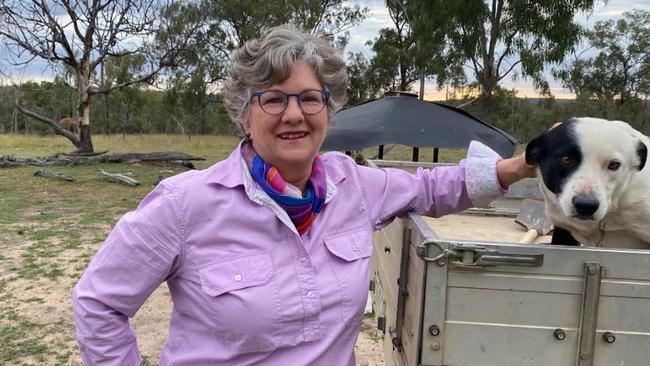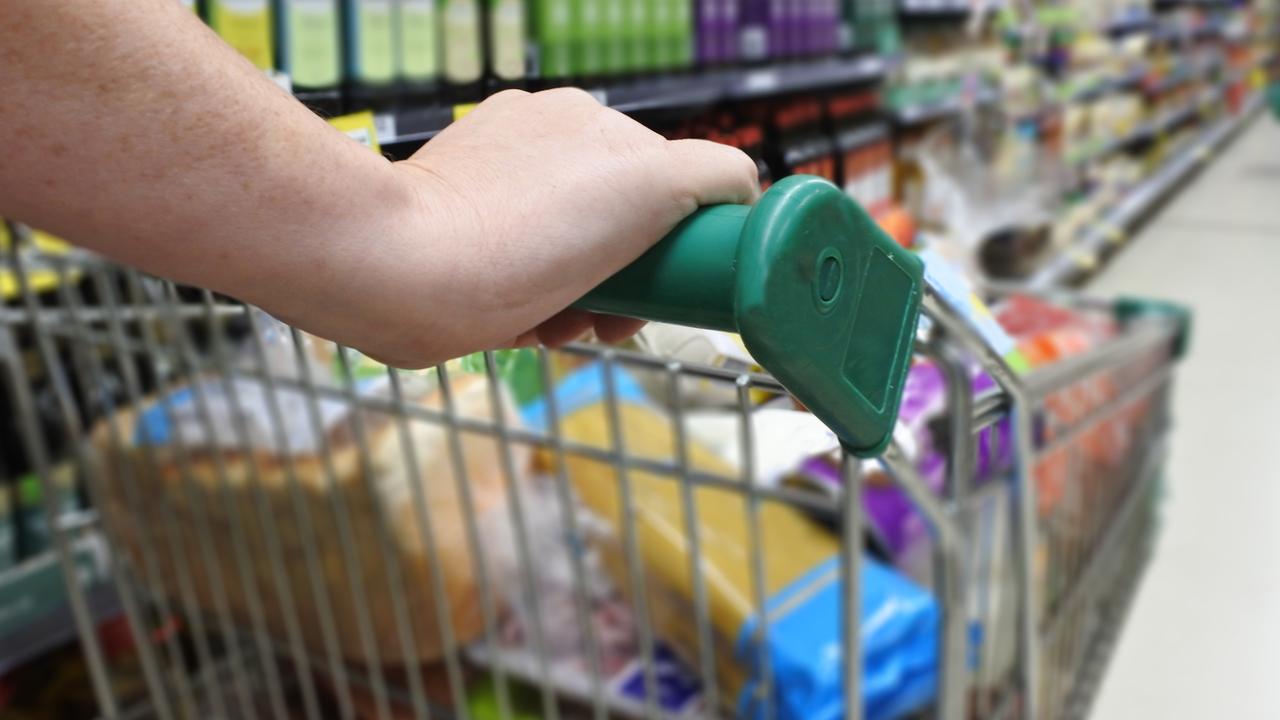Agriculture’s problem with women: an investigation
Analysis shows shows women make up 26.8 per cent of the average agribusiness board in Australia. See the full breakdown of 89 businesses across the country.
Early in her career in Australia’s red meat industry, Meat Business Women Australian chair Stacey McKenna noted she was often the only female in a room full of men.
“Particularly when it came to award ceremonies, or scholarships. There’d be only men on the stage, even if there were women in the room,” Ms McKenna said.
“I suppose they’re seen as being promotable … there was not the same fear seen (about) them having those career breaks.”
While the experience of standing out as a female leader in agribusiness was an isolating one, Ms McKenna has gone on to hold multiple decision-making positions in the corporate agriculture sector. She is industry affairs manager of Midfield Group and a board member of both the Australian Meat Industry Council and the Australian Meat Processor Corporation.
“I started with the Midfield Group … that was actually my family’s business. And part of the reason I’m so passionate about this, and I’m progressing in my career, is because I have access to opportunities that a lot don’t necessarily have,” Ms McKenna said.
Her solitary experience is not an unusual one.
A special investigation by The Weekly Times has revealed female representation at board level in Australia’s agriculture sector still lags behind other industries, and is not on par with the gender split of the wider ag workforce.
An analysis of 89 major Australian agribusinesses and agricultural peak bodies shows women make up 26.8 per cent of the average board.
This is far less than the average across all industries of 34 per cent.
It also falls short of the workforce gender split in the agricultural, forestry and fisheries industries, which was 35 per cent female in 2022-23, according to data from the Workplace Gender Equality Agency.
As one of the minority of women who hold the title of board chair, director or chief executive in modern agriculture, Ms McKenna said the lack of gender diversity was a detriment to ag’s profitability and productivity.

In fact, a 2020 Meat Business Women report showed businesses with executive committee female representation greater than 33 per cent had net profit margins “over 10 times greater” than companies with no women at an executive level.
“It’s good for business, but it’s strongly associated with economic performance and organisation performance,” Ms McKenna said.
DATA ANALYSIS
Analysis of the top 51 ASX-listed agribusinesses in Australia, 14 national peak industry bodies, nine state and national farmer lobby groups and 15 national research and development corporations shows women are a long way from filling an equal – or even representative – seat at the board table, compared with men.
Of the 51 agribusinesses businesses analysed, nine had zero women listed on their boards, only four had 50 per cent or greater female representation and the average was 26.1 per cent.
Of those, Maggie Beer Holdings tops the list for the highest rate of female representation, with 60 per cent of board members women.
The A2 Milk Company, Elders and EcoFibre have also achieved gender parity, with 50 per cent of board members female.
A2 Milk Company managing director and chief executive officer David Bortolussi said the company has focused on enhancing the gender balance in its workforce “for a number of years”, which included setting a target of “a minimum of 40 per cent women and 40 per cent men across leadership positions”.
At present, A2 Milk has equal gender representation at a board level, while its executive team is 30 per cent women.
“At this point, we are pleased with the gender balance of our board of directors, being 50:50 led by chair Pip Greenwood, which is similar to the balance of our people leaders across the business,” Mr Bortolussi said.
“Our executive leadership team currently comprises 30 per cent women, which we intend to increase over time through leadership development and selection processes subject to ensuring the most appropriate person is appointed to the role.”
Companies with no women on their boards include Lindsay Australia Limited, Murray Cod Australia Limited, FFI Holdings, Centrex, Seafarers Group Limited, Jatcorp, Farm Pride food, Tasfoods Limited and Pure Foods Tasmania.
State farming lobby groups have an average of 24.7 per cent of board roles held by women, while commodity peak bodies ranked slightly higher with 25.7 per cent.
Victorian Farmers Federation has achieved gender parity with three women on its six-member board, and both the president and vice president roles are held by women.
In contrast, Primary Producers South Australia has no female board members.
Females fare better in the research and development sector, with an average of 38.7 per cent of board positions held by women.
Peak commodity bodies, meanwhile, have low levels of female representation at director level: the 15 groups analysed had an average of 25.7 per cent female participation.
Three of the groups – Grain Producers, Australian Dairy Farmers and the Australian Livestock Exporters Council – had zero women at a board level.
Only Ricegrowers Association of Australia had gender equity at a board level, with a 50:50 split of men and women.
Sheep Producers Australia chief executive Bonnie Skinner said with more than 50 per cent of the organisation’s employees women, and three of seven board positions filled by women, the organisation’s workforce reflected a “balanced gender profile”.

“We are seeing more women choosing a career in agriculture and more prominence in leadership roles, historically ag has been heavily male dominated so equality in leadership roles will take time,” Ms Skinner said.
“Inclusion is no longer a ‘nice-to-have’, but rather a necessity if our industry is to thrive in the years to come and women bring a lot of value to agriculture.”
Grain Producers Australia chief executive Colin Bettles said recent calls for nominations for the vacant northern region grower director position included a number of “proactive steps” to promote an open and inclusive process to recruit growers with diverse views and backgrounds.
“This included issuing a media statement calling for nominations from grain producers in the north, regular social media posts, advertising with Women on Boards, and reaching out to share this opportunity with members of the AgriFutures Rural Women’s Award alumni network,” Mr Bettles said.
He said an organisation such as AgriFutures could fund research to assess different pathways for women to take up leadership positions.
“This analysis could also include assessing barriers to entry for various leadership roles for women and others, and engaging with people outside the current representative system, to ensure a comprehensive range of views are captured, to inform the process with accurate information which can ultimately lead to better outcomes,” he said.
BARRIERS TO CHANGE
Concerted efforts have been made by industry leadership and the government in recent years to boost the number of women participating at an executive level in agriculture.
In 2018, then-federal agriculture minister David Littleproud said the number of women on agricultural boards had lifted 10 per cent, after actively looking for top candidates “of both genders”.
“ … above all it’s about righting a wrong of past generations having excluded women from leadership roles in agriculture,” Mr Littleproud said.
National peak body for the grass-fed beef industry, Cattle Australia is actively working towards increasing the number of women within the organisation.
Just one of its seven board members is a woman: Elke Cleverdon.
One of the problems, according to Cattle Australia chief executive Chris Parker, is the demands of running a business, “which does make it challenging for producers – both male and female – to find what is voluntary time to be actively involved”.
These time pressures are investigated in a WGEA report that quantifies the amount of unpaid care work in Australia. It showed women spend more than 64 per cent of their average weekly working time on unpaid care work, compared to 36.1 per cent for men.
In other words, for every hour men commit to unpaid care work, women commit one hour and 48 minutes.
Dr Parker said the diversity already within the agriculture industry ought to be reflected “at all levels”, with Cattle Australia working as part of its three-year plan to achieve 50 per cent gender diverse candidates for both elected and employed positions.
This includes further work in the gender diversity space, and a focus on changing perceptions of the sector, strengthening networks, creating visible role models, and ensuring job designs and locations aren’t a limiting factor.
“We have already accomplished this in our employed positions, with more than 50 per cent of paid staff identifying as women, while Cattle Australia’s recently elected regional consultative committee has nearly 40 per cent of the representation who identify as woman,” Dr Parker said.
Of all chief executive positions in agriculture, WGEA data shows only 1.9 per cent of roles are held by women, and women account for just 18.1 per cent of executive and general managers.
The modern agriculture industry – and its ambitions for future gender parity – appears to clash with the realities of juggling work, childcare, domestic commitments, and limited free time to commit to voluntary positions.
GrainGrowers chief executive Shona Gawel said organisations could take practical steps to “attract and retain women” at executive levels in agriculture.
“ … and at GrainGrowers, we’ve been proactive in doing these,” Mr Gawel said, with measures such as the way positions are advertised and communicated, through to flexible working arrangements and development opportunities.
“Fundamentally though, it starts with the culture of our organisation, and I believe our ability to attract a diverse talent pool is a testament to a health, values-driven focus GrainGrowers has in place.”
While the organisation had no specific gender targets in place, Ms Gawel said it was “unrelenting” in working towards fairness, transparency and skills-based appointments.
“Every position we hire for has independent salary benchmarking and remuneration set accordingly.”
Ms Gawel said one of the greatest challenges women faced when taking on executive positions was simply the opportunity to do so.
“If you aren’t getting a strong talent pool of candidates through, perhaps it’s time as a board or as a senior executive to really take stock and examine why.”
WORK TO DO
Former National Farmers Federation president Fiona Simson established the NFF’s Diversity in Agriculture Leadership Program in 2018 to help identify and overcome the barriers to female participation at decision-making level.
She said hurdles women faced when embarking on a career in the industry included childcare challenges and cultural attitudes.
“One of the reasons we started that program seven years ago is because of the disparity between women at the top in agriculture, and women at the farm face,” Ms Simson said.
“Childcare comes up time and time again … particularly for younger women participating. I do think sometimes there is this cultural shift that hasn’t quite happened, in parts of agriculture, that we need to keep working at.
“To accept that diverse groups of people make the best decisions on behalf of the industry, because the industry is diverse.”

Accessible childcare has time and again been cited as a problem for encouraging and retaining a female workforce in the agriculture industry.
WGEA data shows females made up 100 per cent of manager and non-manager employees in agriculture who took primary carers leave in 2022-23.
Across all industries, the statistics show 76.7 per cent of female managers and 87.6 per cent of non-managers took primary carers leave.
Having spent her career working to support and mentor women coming up the ranks in agriculture, AgForce Queensland president Georgie Somerset knows the dual struggles and strengths that come with regional living, particularly for women.
“I actually do think all women need to really back themselves, and believe in their skills,” Ms Somerset said.
“There’s a lot more support around for them these days, and networks available, and great role models.”
While she said women should back themselves when it comes to stepping forward into positions of authority, she said industry needed to do better to make accommodations for safer, accessible workplaces where all could flourish.

“I’m not sure all organisations have realised they’ve actually got a legislative responsibility now to keep people safe,” Ms Somerset said.
“It is a very real discussion for how large organisations invest in their teams and their managers. I see some outstanding female senior leadership … I’m keen to see what experiences those women bring through into senior roles.”





